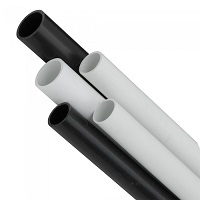Pcs
AED 71.82
AED 71.82
110 mm PVC Pipe
Cash on delivery not available
Returns not allowed
Bundle
AED 167.40
AED 167.40
( Product Code: DCH 2) 20mm = 20Pcs / Bundle
( Product Code: DCH 3) 25mm = 20Pcs / Bundle
( Product Code: DCH 4) 32mm = 10Pcs / Bundle
( Product Code: DCH 5) 38mm = 10Pcs / Bundle
( Product Code: DCH 6) 50mm = 10Pcs / Bundle
Cash on delivery available
Returns allowed
Bundle
AED 77.76
AED 77.76
( Product Code: DCH 2) 20mm = 20Pcs / Bundle
( Product Code: DCH 3) 25mm = 20Pcs / Bundle
( Product Code: DCH 4) 32mm = 10Pcs / Bundle
( Product Code: DCH 5) 38mm = 10Pcs / Bundle
( Product Code: DCH 6) 50mm = 10Pcs / Bundle
Cash on delivery available
Returns allowed
Bundle
AED 98.71
AED 98.71
( Product Code: DCH 2) 20mm = 20Pcs / Bundle
( Product Code: DCH 3) 25mm = 20Pcs / Bundle
( Product Code: DCH 4) 32mm = 10Pcs / Bundle
( Product Code: DCH 5) 38mm = 10Pcs / Bundle
( Product Code: DCH 6) 50mm = 10Pcs / Bundle
Cash on delivery available
Returns allowed
Bundle
AED 108.00
AED 108.00
( Product Code: DCH 2) 20mm = 20Pcs / Bundle
( Product Code: DCH 3) 25mm = 20Pcs / Bundle
( Product Code: DCH 4) 32mm = 10Pcs / Bundle
( Product Code: DCH 5) 38mm = 10Pcs / Bundle
( Product Code: DCH 6) 50mm = 10Pcs / Bundle
Cash on delivery available
Returns allowed
Bundle
AED 129.60
AED 129.60
( Product Code: DCH 2) 20mm = 20Pcs / Bundle
( Product Code: DCH 3) 25mm = 20Pcs / Bundle
( Product Code: DCH 4) 32mm = 10Pcs / Bundle
( Product Code: DCH 5) 38mm = 10Pcs / Bundle
( Product Code: DCH 6) 50mm = 10Pcs / Bundle
Cash on delivery available
Returns allowed
Bundle
AED 93.96
AED 93.96
( Product Code: DCH 2) 20mm = 20Pcs / Bundle
( Product Code: DCH 3) 25mm = 20Pcs / Bundle
( Product Code: DCH 4) 32mm = 10Pcs / Bundle
( Product Code: DCH 5) 38mm = 10Pcs / Bundle
( Product Code: DCH 6) 50mm = 10Pcs / Bundle
Cash on delivery available
Returns allowed
Bundle
AED 110.05
AED 110.05
( Product Code: DCH 2) 20mm = 20Pcs / Bundle
( Product Code: DCH 3) 25mm = 20Pcs / Bundle
( Product Code: DCH 4) 32mm = 10Pcs / Bundle
( Product Code: DCH 5) 38mm = 10Pcs / Bundle
( Product Code: DCH 6) 50mm = 10Pcs / Bundle
Cash on delivery available
Returns allowed
Bundle
AED 151.20
AED 151.20
( Product Code: DCH 2) 20mm = 20Pcs / Bundle
( Product Code: DCH 3) 25mm = 20Pcs / Bundle
( Product Code: DCH 4) 32mm = 10Pcs / Bundle
( Product Code: DCH 5) 38mm = 10Pcs / Bundle
( Product Code: DCH 6) 50mm = 10Pcs / Bundle
Cash on delivery available
Returns allowed
Bundle
AED 159.30
AED 159.30
( Product Code: DCH 2) 20mm = 20Pcs / Bundle
( Product Code: DCH 3) 25mm = 20Pcs / Bundle
( Product Code: DCH 4) 32mm = 10Pcs / Bundle
( Product Code: DCH 5) 38mm = 10Pcs / Bundle
( Product Code: DCH 6) 50mm = 10Pcs / Bundle
Cash on delivery available
Returns allowed

1.jpg)
2.jpg)
3.jpg)
 Cash on delivery not available
Cash on delivery not available Returns not allowed
Returns not allowed1.jpg)
